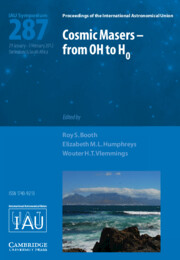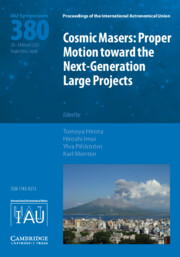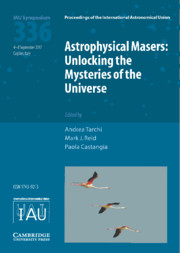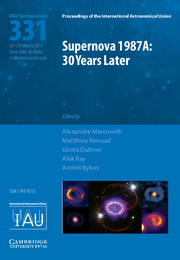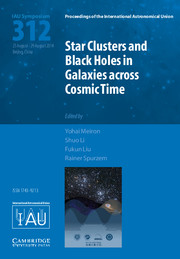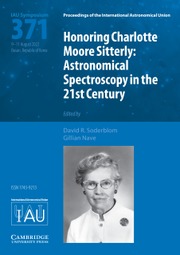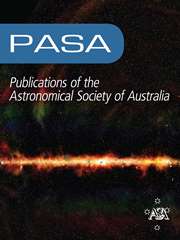Cosmic Masers – from OH to H0 (IAU S287)
Cosmic masers, naturally occurring amplifiers of microwave emission from atoms and molecules in the Milky Way and other galaxies, provide important tools to investigate astrophysical environments. The first, Hydroxyl (OH) masers were discovered in 1965 and since that time several thousand sources of maser emission, from a variety of cosmic molecules have been discovered and studied. Because this natural emission occurs at discrete frequencies, which depend upon specific atomic or molecular transitions, masers are also useful for studying the structure and dynamics of our own galaxy. Masers in other galaxies are now used for cosmological studies of the dynamics of massive black holes in galactic nuclei and to directly measure the Hubble constant, H0. This volume contains a comprehensive, up-to-date review of cosmic masers, their nature, sources, environments and uses, as presented at IAU Symposium 287, the fourth international symposium on cosmic masers.
- The most comprehensive, up-to-date review of cosmic masers, their nature, sources, environments and uses in astrometry and cosmology
- Presents the latest views on cosmic maser theory, from new measurements of maser variability, detailed (VLBI) structure and magnetic fields
- Discusses masers as tools to define galactic structure and dynamics, reviewing the latest measurements from new instruments, including our distance from the centre of the Milky Way
Reviews & endorsements
"... a good up-dating of the subject ..."
Mario Bertolotti, Contemporary Physics
Product details
August 2012Hardback
9781107032842
536 pages
253 × 177 × 25 mm
1.07kg
320 b/w illus. 30 tables
Available
Table of Contents
- Preface
- 1. Advances in maser theory
- 2. Polarization and magnetic fields
- 3a. Star formation: maser variability
- 3b. Star formation masers
- 4. Stellar masers
- 5. Maser surveys
- 6. Cosmology and the Hubble constant
- 7. AGN and megamasers
- 8. Maser astrometry
- 9. New masers and further developments in maser physics
- 10. Masers and the impact of new facilities
- Conference summary
- Index.

